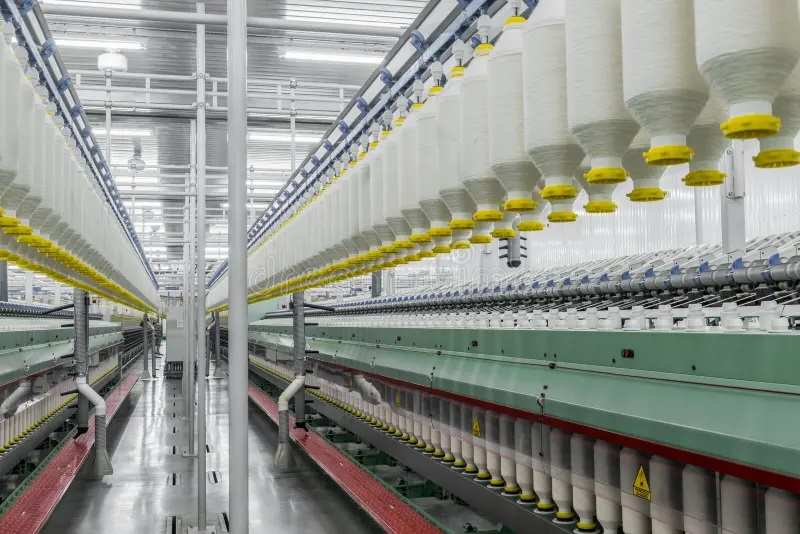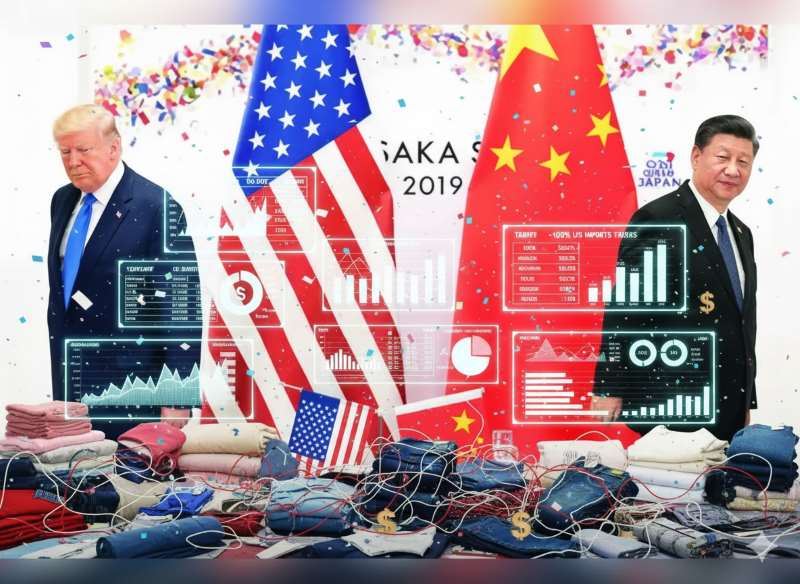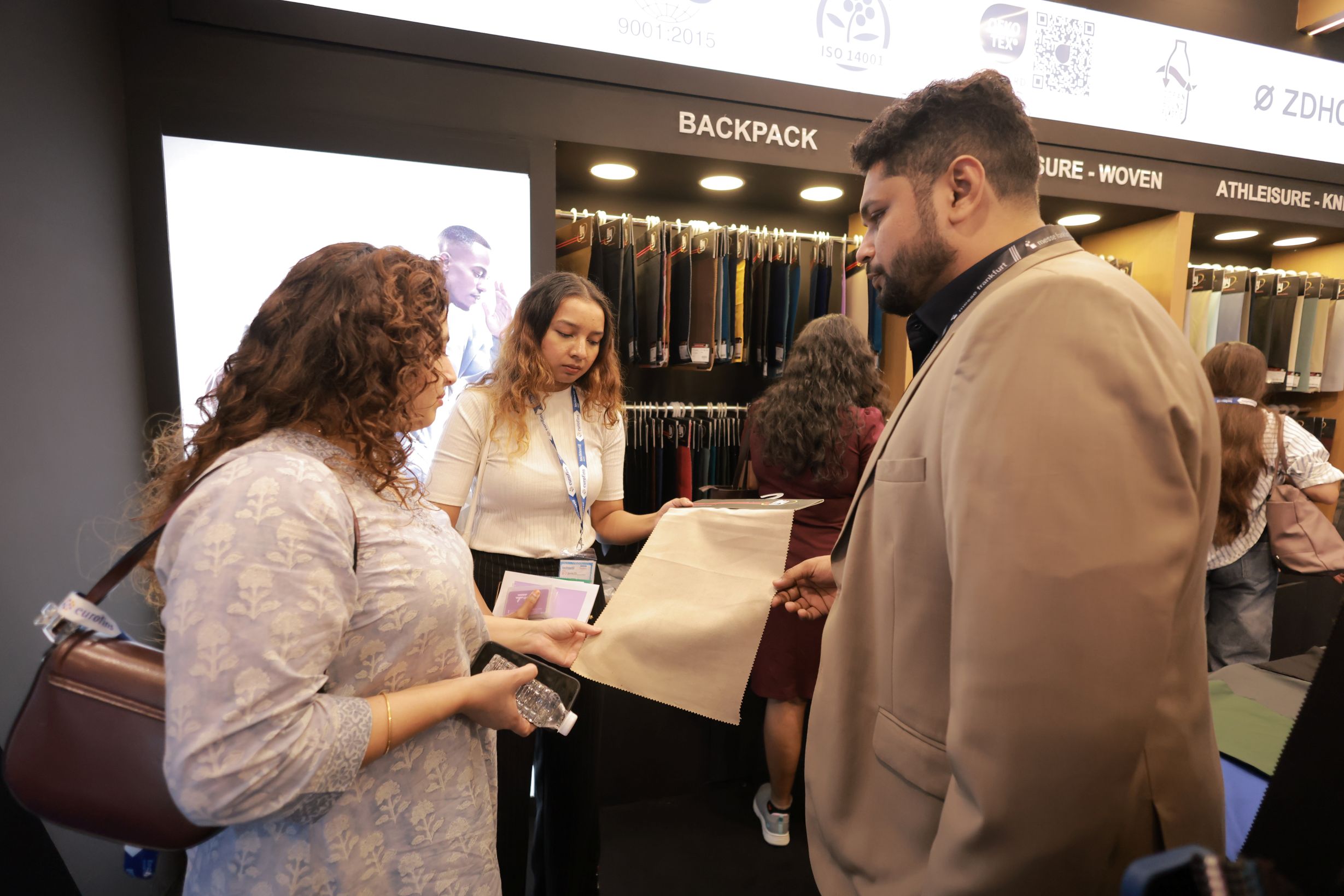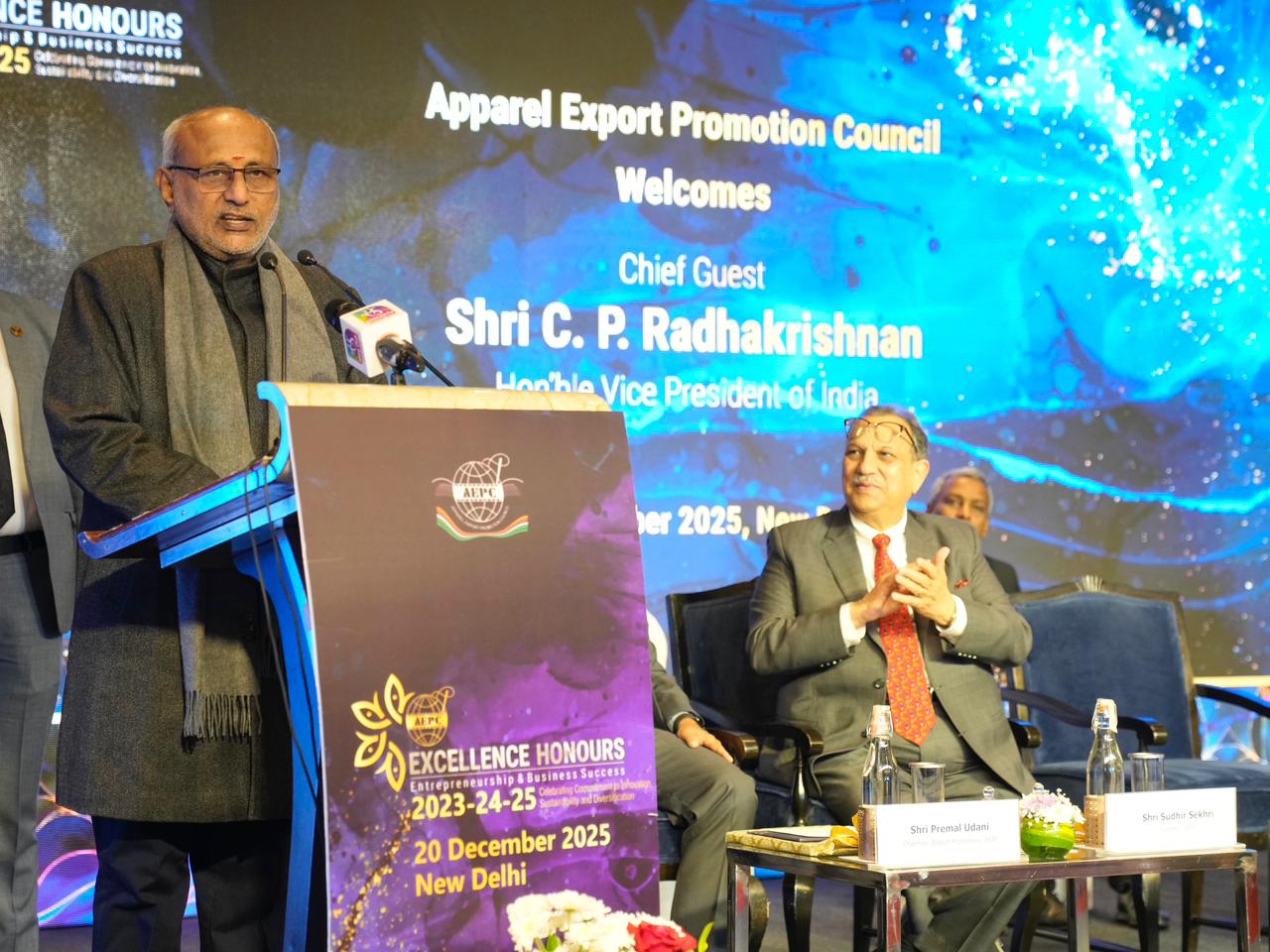FW

In a speech that captured both urgency and ambition, Danish MEP Rasmus Nordqvist stood before an audience of European policymakers, industry leaders, and sustainability advocates at a recent event hosted by the Danish Presidency of the Council of the EU 2025, and declared what may soon become the new mantra of Europe’s industrial future: ‘Circularity is security’.
Framing the circular economy not merely as an environmental agenda but as a pillar of Europe’s economic and geopolitical resilience, Nordqvist called it “the industrial revolution Europe needs.” His vision was clear transitioning away from the old linear ‘take-make-dispose’ model toward a closed-loop, regenerative system would be central to ensuring that Europe remains competitive, resource-secure, and globally relevant in a century defined by ecological limits and supply-chain volatility.
Circular revolution as industrial policy
“Keeping materials in use is not just a sustainability issue it’s a security issue,” Nordqvist said, underscoring that Europe’s dependence on imported raw materials leaves it exposed to global shocks, from energy crises to geopolitical tensions. Circularity, he argued, is the lever that can reduce this vulnerability.
The model he envisions would turn waste into value, shorten supply chains, and create hundreds of thousands of new jobs not in extractive industries, but in design, repair, remanufacturing, and recycling. It is a blueprint that marries ecological responsibility with economic competitiveness.
Indeed, recent European Commission data echoes this potential: a fully realized circular economy could add €1.8 trillion to the EU economy by 2030, while cutting net resource use by 20 per cent and generating over 700,000 new jobs across the bloc. “This is industrial policy for the 21st century,” Nordqvist emphasized. “Circularity is not just about reducing harm it’s about creating strength.”
Barriers on the road to circularity
But as Nordqvist and other speakers at the event made clear, Europe’s path to circularity remains uneven and beset with structural barriers. The first is price disparity. Virgin materials often subsidized, readily available, and globally traded still undercut recycled or secondary alternatives. This distorts the market and discourages investment in circular business models.
Second, Europe’s single market is anything but single when it comes to circular economy rules. The MEP lamented the “patchwork of national regulations” governing product standards, waste classifications, and recycling protocols creating complexity, raising compliance costs, and undermining scale.
Third, investor uncertainty looms large. The absence of EU-wide standards and metrics for circularity, such as how to measure product durability, repairability, or recyclability makes it difficult for financiers to assess risk and channel capital toward credible green innovations.
Finally, there’s the challenge of product design itself. “Too many products are still designed for obsolescence, not for longevity,” Nordqvist observed. Without embedding circular principles at the design stage, efforts to recycle or reuse often fail downstream.
A blueprint for Europe’s circular future
To overcome these hurdles, Nordqvist outlined a four-pillar action plan that could reshape Europe’s industrial landscape.
1. Closing the price gap: He proposed expanding the Carbon Border Adjustment Mechanism (CBAM) to include plastics and chemicals, effectively internalizing the environmental cost of virgin materials and levelling the playing field for recycled alternatives.
2. Harmonizing regulations: A unified framework for waste and product rules across member states would reduce friction, lower costs, and enable true circular scalability within the EU’s single market.
3. Mobilizing capital: Establishing EU-wide metrics and standards for circularity could unlock private and institutional investment, giving confidence to investors seeking credible, measurable impact.
4. Designing for circularity: Nordqvist urged faster implementation of the Ecodesign for Sustainable Products Regulation (ESPR), prioritizing high-impact sectors such as electronics, textiles, and construction materials industries responsible for a disproportionate share of Europe’s material footprint.
“Europe has always led through innovation,” he said. “Now we must lead through regeneration.”
Emergences of a broader consensus
The event, moderated by Sandrine Dixson-Declève, Co-president of the Club of Rome, featured a lineup of distinguished voices including Emmanuel Chaponniere, Adèle Naudy-Chambaud, and Commissioner Jessika Roswall, who reinforced the call for an industrial strategy that fuses green ambition with economic realism.
Roswall noted that aligning circular policies with trade, competition, and investment frameworks will be critical to scaling their impact. “Circularity cannot exist in isolation,” she said. “It must be embedded across Europe’s value chains—from mining and manufacturing to consumption and waste.”
Chaponniere emphasized that the next wave of competitiveness will come not from resource extraction but from resource efficiency, echoing Nordqvist’s assertion that the circular transition offers Europe a “first-mover advantage” in the race for green markets.
Circularity as Europe’s strength
As the discussion drew to a close, Nordqvist’s message resonated as both a warning and a rallying cry. Europe, he suggested, stands at a crossroads between industrial decline if it clings to the linear past, and renewed leadership if it embraces circularity as its strategic core. “Waste should not be a burden,” he concluded. “It should be a resource. And in that transformation lies Europe’s strength.”
From vision to execution
The shift Nordqvist envisions is not merely environmental reform it’s economic reinvention. Achieving it will require political will, regulatory coherence, and substantial investment in infrastructure and innovation. But perhaps more importantly, it will demand a mindset change from consumers, corporations, and governments alike. For decades, Europe’s prosperity was built on throughput more extraction, more production, more consumption. The next era, as Nordqvist and his peers argue, must be built on circulation more reuse, more repair, more resilience.
As the EU crafts its post-2025 industrial agenda, the message from Brussels is becoming increasingly clear: the future of European competitiveness may well hinge not on how much it produces, but on how intelligently it reuses.

“The US government’s economic data makes no sense. It’s a con,” declares David Birnbaum, strategic planner for the global garment export industry. “The United States under Donald Trump is joining the national GDP conmen — and is increasingly paying the cheater risk premium.”
Birnbaum’s words cut deep. His critique isn’t political theatre — it’s a forensic assessment of a nation losing grip on its own economic reality. He accuses Washington of manufacturing an illusion of prosperity, where official data no longer reflects the experience of businesses or citizens. The result, he warns, is a “death spiral”: an America where truth has been replaced by narrative, and where survival for corporations may now depend on quietly relocating beyond US borders.
Unlike pundits driven by ideology, Birnbaum speaks as a pragmatic industry veteran — someone who has witnessed how misinformation distorts global trade and business strategy. His alarm is simple but chilling: the United States is becoming “a nation of economic liars,” a label that carries both reputational and financial penalties.
In his view, the future is already writing itself — one where America is no longer the world’s economic leader, but a “minor import customer” of its own offshored enterprises. The ultimate irony, Birnbaum notes, is that those who once rallied under “Make America Great Again” may well be the architects of its economic decline — “right-wing billionaires who, in their war to make their country an all-white Protestant state, went broke.”
For Birnbaum, this is more than a political moment — it’s a moral reckoning. A nation cannot build sustainable growth on falsified data and selective truth. Once economic integrity collapses, so does investor confidence, industrial trust, and ultimately, the very credibility of the state.
The Credibility Crisis: From data to delusion
The widening gap between official data and economic reality is not uniquely American — but it is newly American. Nations like Argentina, Greece, and China have all faced consequences for data manipulation, often to mask instability or lure investment. The outcome is always the same: credibility erosion, downgraded risk ratings, and soaring “cheater premiums” from global banks.
That credibility erosion is already visible in the US. A recent Reuters survey of 100 top policy experts found that 89 expressed concern over the reliability of federal data — citing falling survey response rates and drastic staff cuts at statistical agencies. With trust waning, businesses and investors are turning to alternative data sources like the Challenger Job Cut Report or ADP National Employment Report to read the true economic pulse. As one economist aptly warned, “You can suppress statistics, but you can’t suppress reality.”
That reality is showing cracks: the US Bureau of Labor Statistics recorded only a 22,000-job increase in August — a stagnation masked by political spin — while the Consumer Price Index rose 0.4% in the same month, its sharpest rise since January. These are not the numbers of a booming economy, but of one straining under its own false optimism.
As a Brookings Institution analysis put it bluntly: when official data loses credibility, it’s not just investors who lose confidence — it’s the nation itself.
Levi Strauss & Co delivered a robust third quarter for fiscal 2025, fueled by its strategic shift to a Direct-to-Consumer (DTC)-first model, prompting the company to raise its financial outlook for the full year.
The company’s net revenue grew 7 per cent Y-o-Y on both a reported and organic basis, hitting $1.5 billion for the quarter. This top-line strength translated directly to profitability, with the gross margin expanding by 110 basis points to 61.7 per cent. The company’s management attributed this expansion primarily to a favorable channel mix (more DTC sales) and strategic price increases. Adjusted Diluted EPS also edged up to $0.34, compared to $0.33 in the same quarter last year. Most impressively, the company's net income from continuing operations surged from $23 million in Q3 2024 to a significant $122 million in Q3 2025
The core driver of this performance was Levi's pivot to directly engaging its customers. The DTC Channel saw net revenues jump 11 per cent (reported basis) and accounted for 46 per cent of total net revenues in the quarter.
Within the DTC segment, e-commerce with net revenues soaring by 18 per cent. The Wholesale channel showed resilience, posting a 3 per cent increase in net revenue.
Geographically, Asia emerged as the strongest performer, with net revenue rising by 12 per cent growth, The Americas also delivered solid growth, with revenue increasing by 7 per cent.
Europe contributed positively to the quarter, with revenue also showing an increase.
Following this strong quarter, Levi Strauss leadership expressed confidence in its strategic transformation, forecasting continued strong performance through the holiday season despite the headwinds of a complex macroeconomic environment and higher tariffs. The revised full-year 2025 outlook signals the company's momentum is set to continue.
Bangladesh's readymade garment (RMG) exports to non-traditional markets recorded a sluggish growth in Q1, FY26, reflecting weak global demand and persistent economic uncertainty.
Official data from the Export Promotion Bureau (EPB) shows, exports to these new destinations- including Japan, Australia, India, Korea, China, Mexico, and Turkey - grew by a mere 0.77 per cent Y-o-Y to $1.65 billion during the July-September quarter. Industry insiders attribute this marginal increase to high living costs, sluggish global economic growth, and geopolitical tensions that are forcing consumers worldwide to prioritize essential spending over clothing purchases.
Within the non-traditional category, woven garments outperformed knitwear. Woven exports rose by 2.99 per cent to $847.37 million, while knitwear shipments declined by 1.45 per cent to $808.91 million.
Despite the overall muted performance, a few countries stood out. China emerged as the fastest-growing destination, with RMG exports soaring by 59.52 per cent to $71.14 million, largely driven by an 85.88 per cent growth in woven garments. Japan remains the largest non-traditional market, importing $334.91 million in apparel. Other strong performers included Saudi Arabia (up 34.38 per cent), Chile (up 14.37 per cent), and Brazil (up 9.66 per cent) In contrast, exports to Australia, Turkey, Korea, and Mexico saw declines ranging from 8.13 per cent to 31.30 per cent.
The country's total RMG exports showed resilience, growing by 4.79 per cent to reach $9.97 billion overall in the quarter. This total growth was supported by strong performance in traditional, major markets: exports to the United States rose by 8.60 per cent to $2.01 billion, the European Union grew by 3.14 per cent to $4.74 billion, and the United Kingdom increased by 6.74 per cent to $1.21 billion.
Japanese fashion giant Uniqlo plans to open 11 new stores across the United States. This significant commitment marks a decisive doubling down on the US retail market, signaling a fresh, full-scale attempt to transform its presence from a specialized destination into a mainstream national brand.
The announced store openings will strategically place Uniqlo in key metropolitan hubs that have historically been underserved by the retailer. The new locations will stretch geographically from Seattle on the West Coast to Boston in the Northeast, suggesting a carefully planned push into major shopping centers and high-traffic urban areas nationwide. This coast-to-coast growth signals Uniqlo’s intent to challenge existing fast-fashion competitors like Zara and H&M more directly by offering its distinct brand of clothing to a wider American audience.
For years, the US market has been a slow-burn project for Uniqlo compared to the explosive growth seen in Asia. However, the recent success of existing flagship locations and increasing consumer demand for quality basics have provided the momentum for this accelerated growth phase. The company is investing heavily to capitalize on this appetite.
At the heart of this massive rollout is the brand’s core philosophy, LifeWear: clothing designed to be highly functional, high-quality, and affordable essentials. Uniqlo is betting that American consumers are increasingly seeking durable, versatile basics that transcend fleeting trends. Products like the popular Heattech thermal wear, ultralight down jackets, and premium linen shirts serve as the foundation for this expansion, positioning Uniqlo as a reliable provider of foundational wardrobe pieces.
This rapid expansion of 11 large-format stores represents a substantial physical investment in the American retail landscape. Each new location will require dozens of staff, translating into the creation of hundreds of new retail jobs across the country. By securing prime real estate, Uniqlo is emphasizing the importance of the physical shopping experience - a crucial component for consumers who prefer to feel the quality of LifeWear fabrics before purchasing. With these new stores opening, Uniqlo is set to become significantly more accessible, solidifying its position as a major player in American apparel.
Europe's e-commerce landscape showed a clear dominance of the clothing, footwear, and accessories category in 2024, with 70 per cent of online shoppers purchasing these items. This figure significantly surpasses multimedia products and streaming subscriptions, according to a recent report by Ecommerce Europe. The Eurostat-based survey also highlights, 31 per cent of consumers buy perfumes and cosmetics online, and 26 per cent purchase sports equipment.
The report offers insights into customer ordering habits, noting that a strong majority of Europeans place orders with domestic sellers. Cross-border shopping remains common, with 33 per cent of customers buying from other European countries. A notable 20 per cent of orders are placed with sellers based outside the EU - a figure being closely watched amid the expansion of non-European platforms like Shein and Temu.
Leaders at Ecommerce Europe are calling for urgent action on competitiveness and regulation. Luca Cassetti, Secretary General, states. while there's a shift in perspective on simplification, the urgency of the situation is unaddressed. Director general Christel Delberghe emphasized the need for consistent and rigorous enforcement across all Member States to ensure that all companies, domestic or foreign, meet the same obligations.
A technological gap persists between businesses of different sizes. Among large companies (over 250 employees), 46 per cent and 41 per cent report high and very high ‘digital intensity,’ respectively. In contrast, smaller and medium-sized enterprises (SMEs) lag behind, with 40 per cent reporting low and 27 per cent reporting very low digital intensity.
Geographically, Western Europe (France, Germany, UK, Ireland, and Benelux) remains the powerhouse of European e-commerce, driving 64 per cent of B2C online sales in 2024. Southern Europe (Portugal, Spain, Italy, and Greece) holds the second spot with a 19 per cent share. In absolute figures for 2023, Western Europe generated €569 billion, followed by Southern Europe (€166 billion), and Central Europe (€79 billion). Northern Europe accounted for €56 billion, with Eastern Europe trailing at €17 billion.
Bed Bath & Beyond is staging a bold comeback following its 2023 bankruptcy and the subsequent closure of all its physical stores. Currently under the ownership of Bed Bath & Beyond, Inc, Bed & Bath aims to shift to a nationwide franchise system, to bring the iconic home retailer back to neighborhoods across America.
This new plan focuses on a highly capital-efficient expansion model. Marcus Lemonis, Executive Chairman, states, the system is designed to ‘empower entrepreneurs’ to own and operate a store, allowing local owners to deliver personalized service and ‘local flavor’ while leveraging the brand’s national infrastructure, marketing, and technology.
The company will maintain a smaller footprint of corporate stores across the US, but the complementary franchise network is intended to rapidly grow the company's reach, eventually touching nearly every major community in America.
The franchise stores will be turnkey operations, meaning they will be ready-to-open with the layout, design, and setup already complete, allowing franchisees to begin operating quickly. These new locations are specifically designed with a ‘neighborhood feel’ to foster a deeper community connection.
Customers can expect the stores to retain the same core departments that the original Bed Bath & Beyond was known for, including Home, Kitchen Living, Storage & Organization, and Holiday Shoppe.
A key element of this localized approach is product curation: approximately 80 per cent of the items will be standardized and curated by the corporate brand. However, the remaining 20 per cent will be localized by the franchisees, allowing them to showcase regional products and designers tailored to their specific community's tastes. This dual strategy aims to restore Bed Bath & Beyond's presence and trust as one of the country's most reliable home retail brands.
How is Amazon boosting logistics? Explore the company’s massive new centers in Oregon and Indiana, set to hire 3,000 people.
Amazon is expanding its logistics network by opening two new, massive fulfillment centers, including its largest ever in the Pacific Northwest.
The most substantial new facility is located in Woodburn, Oregon, just outside of Portland. According to local media, this sprawling e-commerce distribution center covers 3.8 million sq ft and is four times larger than the terminals at the nearby international airport. The facility is designed to store millions of products and is equipped with highly advanced automation technology, including specialized scanners, conveyor systems, and robots that automatically retrieve, sort, and deliver inbound and outbound orders.
To run this immense operation, Amazon plans to initially hire 3,000 people. The grand opening ceremony for the Woodburn facility was attended by local leaders, including Democratic Congresswoman Andrea Salinas.
Amazon is simultaneously moving forward with another large-scale e-commerce distribution center construction project in Indiana, further boosting its national fulfillment capacity. This rapid expansion highlights Amazon's ongoing strategy to invest heavily in physical infrastructure and automation to speed up delivery times across the United States.

India's clothing fiber sector is on the cusp of a revolutionary decade, moving beyond its traditional identity as a cotton powerhouse to embrace a future where technology, sustainability, and digital commerce form the new foundation of growth. Projected to grow at a Compound Annual Growth Rate (CAGR) of 6 per cent between 2025 and 2035, this decisive growth phase is driven by fundamental shifts in consumer behaviour and a profound commitment to circularity.
The duel of fibers
At the heart of the Indian textile ecosystem lies cotton, a fiber that still accounts for a commanding 45 per cent market share in 2025 and anchors India's global position with 23 per cent of world production. However, cotton faces mounting structural pressures from its water-intensive cultivation and vulnerability to climate change. The industry is responding with a calculated evolution, investing heavily in organic farming, genetically enhanced seeds, and rigorous traceability schemes backed by the Cotton Corporation of India (CCI) to meet rising international buyer demand for sustainable sourcing.
The true acceleration, however, is being led by synthetic fibers, particularly polyester, which is forecast to outpace overall growth with a robust CAGR of 7.50 per cent from 2025 to 2035. This growth is not merely about volume but about innovation. Polyester’s dominance (38 per cent market share in 2025) is led by its cost-effectiveness, performance features, and, critically, its adaptability for the new era of performance-driven apparel.
The narrative for synthetics has transformed from a focus on low cost to one of sustainability leadership, driven by recycled polyester (rPET) from PET bottles and textile waste, and the emergence of bio-based synthetics. Indian textile parks are rapidly becoming testbeds for high-value specialty fibers like moisture-wicking, antibacterial, and UV-protective variants, directly appealing to the modern, health-conscious consumer.
Table: India’s clothing fiber market outlook (2025–2035)
|
Fiber type |
2025 share (%) |
Projected CAGR (2025–35) |
Trends driving growth |
|
Cotton |
45% |
4.50% |
Traceability, organic cotton, climate-smart practices |
|
Polyester |
38% |
7.50% |
Activewear, rPET, performance apparel |
|
Viscose/Cellulosics |
10% |
6% |
Eco-friendly blends, fashion versatility |
|
Wool & Others |
7% |
3% |
Niche luxury, winter wear |
The new consumer, digital, active, and male
Domestic demand is proving to be a powerful tailwind, fundamentally reshaped by two demographic forces: the rise of a digitally-savvy middle class and the exploding menswear segment.
Globally, menswear will account for 39.5 per cent of clothing fiber demand by 2025. In India, this trend is intensified by urban young professionals seeking functional yet fashionable apparel. This demand is most visible in the explosive growth of athleisure and performance wear, which relies heavily on engineered synthetic fibers like polyester, elastane, and nylon. For a segment long considered conservative, men's fashion has entered an era of experimentation, driving fiber manufacturers to prioritise adaptability and performance.
The shift to digital-first consumption with India’s online fashion market projected to surpass $30 billion by 2030 further accelerates this trend. E-commerce platforms and fast-fashion players leverage AI-driven design systems to predict trends and streamline supply chains. This demands fibers that allow for mass customization and on-demand production, emphasizing quick manufacturing characteristics such as flexibility and dye uptake, particularly for fast-moving categories like sportswear.
Circularity, the industry's new economic engine
The most transformative factor is the apparel industry's definitive shift toward the circular economy. Once niche, fiber recycling technologies are now a major draw for investment.
Technology scaling: Both mechanical and advanced chemical recycling methods are being scaled up across India's textile hubs in Surat, Tirupur, and Panipat. These technologies break down used textiles into base polymers, diverting waste from landfills and creating a closed-loop system.
Policy support: The government's National Textile Mission 2030 strategically aligns with these goals, aiming to integrate dedicated recycling clusters.
Brand commitment: Brands are proactively implementing take-back schemes and committing to only using certified, traceable, sustainable fibers.
his paradigm shift signals a break from the throwaway culture of fast fashion, providing consumers with more apparel made from recycled polyester, organic cotton, and specifically engineered blended fibers designed for eventual reuse.
The Balancing act ahead
The future of India's clothing fiber sector, spanning the 2025-2035 period, will be defined by a crucial balancing act: cost vs. consciousness. The industry must simultaneously cater to a price-sensitive domestic market and global fast-fashion clients who require the affordability and scale of traditional materials, while meeting the rising regulatory and consumer-led demand for sustainable, circular, and high-tech fibers.
The success story of the next decade will belong to the Indian textile players who can master this dual mandate: delivering affordable, functional apparel while rigorously adhering to sustainability commitments. With the strong anchor of its cotton legacy, the innovative thrust of synthetics, and the acceleration of digital commerce and circularity, India's clothing fiber sector is uniquely positioned not just for growth, but to reinvent the very fabric of global fashion.

The imposition of an additional 100% tariff on all Chinese goods by President Donald Trump—a move that underscores the fickleness and high-stakes nature of recent U.S. trade policy—has triggered a seismic shift in the global textile and apparel industry. This sudden, massive hike, effective from November 1, 2025, or sooner, effectively raises the total tariff on Chinese goods to over 130%. For a global textile trade that relies heavily on China’s scale and efficiency, this action instantly renders the world’s largest supplier uncompetitive in the critical U.S. market, creating a void of tens of billions of dollars and launching a high-stakes competition among every major textile-exporting nation to absorb the redirected U.S. demand.
The total U.S. textile and apparel import market from China, which once topped $45 billion annually, is now a massive opportunity. The benefits will not be distributed evenly; they will flow primarily to the countries offering the greatest trade stability, cost advantage, and production scale.
Productwise Information: What is "For Grabs"
The products most "for grabs" are those where China had a large market share and has been hit with the steepest tariff increases. This market shift is already well underway, with China's market share in U.S. apparel imports falling to just 15.6% in value by July 2025 (down from 24.6% a year prior). The shift is most pronounced in apparel and home textiles, where China's exports are now subject to immediate, prohibitive cost increases.
Data Table: Top US Apparel Imports from China Facing Prohibitive Tariffs
The table below highlights specific high-volume apparel products (by HS Code) that were major U.S. imports from China in 2024 and are subject to massive, multiple-hundred-percent tariff hikes, indicating the magnitude of the market share that is now shifting.
|
Product Category (HS Code) |
Total US Imports (2024 Value) |
China's Contribution (2024 Value) |
Tariff Increase on China (Example) |
Primary Beneficiary Countries |
|
Cotton Pullovers/Cardigans (HS 611020) |
$7.41 Billion |
$1.04 Billion |
~1,263% |
Vietnam, Cambodia, Bangladesh |
|
Man-Made Fibre Pullovers (HS 611030) |
$4.84 Billion |
$0.99 Billion |
~916% |
Vietnam, Honduras, Indonesia |
|
Women's Cotton Trousers/Shorts (HS 620462) |
$4.01 Billion |
$0.67 Billion |
~1,606% |
Bangladesh, Vietnam, Pakistan |
|
Brassieres (HS 621210) |
$2.12 Billion |
$0.58 Billion |
~1,311% |
Vietnam, Indonesia, Sri Lanka |
|
Hosiery (HS 611596) |
$1.53 Billion |
$1.10 Billion |
~849% |
Vietnam, Pakistan, El Salvador |
|
Synthetic Fibre Dresses (HS 620443) |
$1.13 Billion |
$0.51 Billion |
~1,115% |
Vietnam, India, Indonesia |
The Winners & High Risk contenders
|
Country/Group |
Category |
Core Competitive Edge |
Primary Product Advantage |
U.S. Tariff Status (Approx. Rate) |
Key Constraint/Risk Factor |
|
Vietnam |
Winner (Leader) |
Strong compliance, existing large scale, and high-quality reputation. |
Certain Apparel categories (already surpassed China in some U.S. value), higher-value items. |
Low & Stable (≈20%) |
Heavy reliance on imported raw materials (fabrics/yarns, often from China). |
|
Bangladesh |
Winner (Volume) |
Lowest labor costs in Asia, massive volume capacity for cut-and-sew. |
Large-volume Ready-Made Garments (RMG), cotton basics (T-shirts, sweaters). |
Low & Stable (≈20%) |
High reliance on imported fabric; infrastructure bottlenecks, social compliance concerns. |
|
India |
High-Risk Contender |
Complete, integrated value chain (farm-to-garment) for cotton. |
Home Textiles (bedding, towels), Cotton Apparel. |
High (≈50%) |
Currently subject to high, separate U.S. tariffs, drastically reducing price competitiveness versus Vietnam/Bangladesh. |
|
Pakistan |
High-Potential Contender |
Vertically integrated cotton-to-garment sector, specialized expertise. |
High-quality Denim, Woven Cotton Products. |
Low/Moderate (≈20%) |
Geopolitical instability, persistent labor compliance concerns, unreliable power supply. |
|
Indonesia |
Niche/Diversifier |
Capacity for more complex, higher-value manufacturing. |
Outdoor Apparel, Athletic Wear, complex garments. |
Low/Moderate (≈20%) |
Higher labor costs compared to Vietnam/Bangladesh, infrastructure limitations. |
|
Cambodia |
Niche/Diversifier |
Strong focus on social compliance and ethical sourcing. |
Sustainability-focused apparel, small-to-mid volume orders. |
Low/Moderate (≈20%) |
Smaller production scale; pressure on labor rights and infrastructure. |
The Winners: Stable and cost-competitive alternatives
The primary beneficiaries are the countries that have already proven capable of handling large-volume U.S. orders and, crucially, enjoy significantly lower U.S. tariff rates.
1. Vietnam: The fastest-growing leader
● Competitive edge: Vietnam is widely seen as the biggest immediate winner. It has already surpassed China in certain apparel import categories to the U.S. Its textile and garment industry is robust and benefits from a strong reputation for compliance and quality.
● The advantage: Vietnam's exports to the U.S. generally face a much lower, more stable tariff rate compared to the prohibitive new rate on China (130%+). This cost disparity guarantees market share.
● Challenge: Vietnam's industry still relies on imported raw materials (especially fabrics and yarns, often from China), which increases lead times and reduces the national value-add for full-package orders.
2. Bangladesh: The volume powerhouse
● Competitive edge: Bangladesh is the world's second-largest apparel exporter, specializing in large, low-cost Ready-Made Garment (RMG) orders, particularly cotton basics. Its competitive advantage is driven by the lowest labor costs in Asia.
● The advantage: Like Vietnam, Bangladesh enjoys a low U.S. tariff rate, making its finished goods far cheaper than Chinese alternatives. Orders for bulk items (T-shirts, sweaters, undergarments) are expected to surge here.
● Challenge: The industry is heavily reliant on imported fabric (often from India, China, or Vietnam) for most of its production. Infrastructure bottlenecks, social compliance concerns, and a less diversified product range (focus on knitwear) limit its ability to capture high-end or specialty textile business.
The ‘High-Potential’, ‘High-Risk’ contenders
These countries possess the capability but face distinct headwinds that may limit their immediate absorption of Chinese market share.
3. India: The vertical integration hurdle
● Competitive edge: India is the only country with a complete, integrated value chain from cotton farming to finished garments, making it a strong competitor for Home Textiles (bedding, towels) and Cotton Apparel. Indian textile exports to the U.S. have been growing steadily.
● The challenge (The Trump volatility impact): Despite the huge opportunity, India's ability to capitalize is severely constrained by existing U.S. tariffs on its goods (imposed in a separate trade dispute context). While 50% is better than 130%+, it is drastically higher than the 20% tariff faced by Vietnam and Bangladesh, causing Indian exporters to already report order diversion to competitors. The fickle nature of the current U.S. administration's tariff policy signals India’s stable trade position with the U.S. is currently in doubt.
4. Pakistan: Cotton and denim niche
● Competitive edge: Pakistan has a highly competitive, vertically integrated cotton-to-garment sector, with a global reputation for high-quality denim and woven cotton products. It is a natural fit for complex cotton-based apparel shifting out of China.
● Challenge: Geopolitical instability and persistent concerns over labor compliance and power supply represent major risk factors for U.S. buyers seeking stable, long-term supply chain partners.
5. ASEAN Countries (Indonesia, Cambodia): Niche and diversification
● Competitive edge: Indonesia specializes in higher-value, more complex garments like outdoor apparel and athletic wear. Cambodia, while smaller, is noted for its focus on social compliance, making it attractive to sustainability-focused U.S. brands.
● Challenge: Indonesia is a higher-cost source compared to its peers. Both countries face pressure on labor rights and infrastructure, but their tariff rates are generally more favourable than India’s current rate.
The Loser (Other than China): The U.S. consumer
The ultimate, unavoidable consequence of this tariff escalation is the cost burden shifting directly to the American consumer and retailer.
● Massive inflationary pressure: An effective 130%+ tariff on Chinese textiles—which make up nearly $40 billion in U.S. imports—will either be absorbed by U.S. brands through major profit cuts, or, more likely, passed on as significantly higher retail prices for everything from basic T-shirts and jeans to home furnishings.
● Supply chain shock: The abruptness of the 100% hike creates panic. U.S. buyers need immediate alternatives for the upcoming seasons, forcing a disorderly and expensive relocation of production that few substitute countries can match in terms of scale and speed.
● Uncertainty and instability: The fickle nature of the U.S. policy decision—the willingness to impose a blanket 100% tariff overnight—signals extreme unpredictability. Global sourcing managers are now not just looking for lower costs, but for political stability, making them wary of relying too heavily on any single non-China destination, especially one (like India) already subject to its own significant, separate U.S. duties.
The global textile industry is braced for a turbulent six months. While Vietnam and Bangladesh are poised to capture the lion's share of the redirected orders due to their existing low-tariff access, the underlying volatility of U.S. trade policy guarantees that this market shift will be characterized by chaos, rising costs, and a frantic search for reliable, long-term non-Chinese partnerships.












